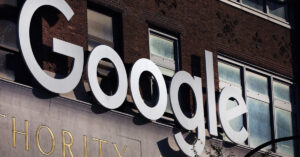
The sun had been up for only an hour, a meager press corps had just rolled out of bed, and there were just a handful of voters to greet at the polling place in Chelsea that was Andrew Yang’s first stop on Tuesday. None of this curtailed his enthusiasm.
“It’s Election Day! Yeah!” Mr. Yang said, clapping and pumping his fists as he talked to reporters. “And I think you know who they’re voting for,” he chuckled, looking to his wife, Evelyn, for support. “This guy!”
Mr. Yang has at times seemed indefatigable. Despite testing positive for Covid-19 in February and a brief hospital visit for a kidney stone in April, he has packed his schedule with in-person campaign events, counting on his enthusiasm to win over voters.
That same energy was on display at P.S. 33 in Chelsea, where he delivered his closing pitch to voters.
“If you want your city to work for us and our families, you have got to get out and vote. I’d love it if it were for me,” he said. “But even if it’s not for me, vote anyway, and you can rank up to five candidates.”
Mr. Yang has endorsed Kathryn Garcia, a former sanitation commissioner who he has spoken admiringly of for months, as his second choice. On Tuesday, he said that he had ranked five candidates on his ballot but would not share those rankings.
He will spend Tuesday hopping from polling location to polling location before closing at an election night party in Hell’s Kitchen.
An official winner is unlikely to be named before the week of July 12. Asked how he’d spend the waiting period, Mr. Yang first joked that he’d keep hitting the trail.
“I’m going to put on exactly what I’m wearing right now and come back to this street corner,” he said, laughing. “I’m going to be here at 6:30 tomorrow morning.” (Ms. Yang laughed too but also looked vaguely horrified.)
But Mr. Yang clarified that he expected to win once the polls closed, and that he would start getting to work on solving the problems he’d identified. “We really don’t have the time to waste,” he said.

It might sound obvious, but the first step to voting in the New York City primaries is to make sure you are eligible.
If you are a United States citizen who has been a New York City resident for at least 30 days, and are not currently incarcerated for a felony, you can vote today. Because today’s elections are closed primaries, you also need to be registered with a political party — and you can only vote in that party’s primaries.
People who are not U.S. citizens cannot vote in today’s elections. People who are currently incarcerated for felonies cannot vote, but, in May, the state enacted a law automatically restoring voting rights to people convicted of felonies who have been released on parole. Misdemeanor convictions do not affect voting eligibility, and people serving time in jail for misdemeanors can still cast ballots.
The deadline to request an absentee ballot online or by mail, as well as the opportunity to vote early, already passed. Today is the deadline to mail in absentee ballots.
Of course, if you are planning to vote in person, you also need to know where to vote. You can look up your Primary Day polling site online — it may not be the same place as your assigned early voting site.

New Yorkers are voting on Tuesday in a momentous Primary Day election that is almost certain to determine the city’s next mayor, at a time when the country’s largest city is seeking to recover from a pandemic that drove home its problems of economic and racial inequality.
A crowded Democratic field has jostled in a sometimes-chaotic race that often focused on a recent rise in gun violence, even as New York remains safer than most large American cities.
Eric Adams, a retired police captain and the Brooklyn borough president, has led in most polling, with other leading contenders including Kathryn Garcia, the former sanitation commissioner, Maya Wiley, a former City Hall counsel and civil-rights lawyer, and Andrew Yang, a former presidential candidate.
Adding to the complexity of the mayoral race, it is the first citywide contest to use ranked-choice voting, a system where voters can rank up to five candidates in order of preference. If no candidate reaches an outright majority of first-choice votes, the candidate with the least votes is eliminated, and their voters’ second-ranked choices are counted, and so on until there is a winner.
The winner will not be clear right away. An unofficial first-choice tally will be released on Tuesday night, but the first-round ranked-choice count will not emerge until a week later, after all absentee ballots have been received, and it could take several more days to reach a final count.
Despite the more-complicated ballots, long lines are not expected, according to the Board of Elections. Officials are encouraging voters to look up their voting precincts at home when possible, to save processing time at the polls, and poll workers have been trained to explain the new system.
Several of the candidates were out early, greeting voters at polling stations and squeezing in some last-minute pitches. The outcome remained highly unpredictable because it was unclear how well polls could predict voter behavior under a new system that some may be unfamiliar with, or how closely harried residents have followed the race.
But Carmella Palmer, an education specialist who was heading to work as Mr. Adams cast his vote in the Bedford-Stuyvesant section of Brooklyn, was well versed.
She said she would rank Mr. Adams first. Then she ticked off four or five other candidates that she liked, including the city comptroller, Scott M. Stringer, who was initially popular with progressive voters but struggled after allegations of sexual misconduct emerged.
“Even though he has a scandal,” she said, “he might be my No. 2.”

This is the first time New Yorkers have been able to vote early in a mayoral primary, and experts said the turnout was pretty good.
According to the city’s Board of Elections, 191,197 New Yorkers came to the polls during the early voting period, which began June 12 and ended on Sunday.
“It was slow and steady,” said Bruce Gyory, a veteran Democratic strategist who has closely studied the city’s electorate. “It wasn’t like the presidential election with lines around the corner.”
The city could be on track to see more than 800,000 Democrats vote in the mayoral primary — more than in the last competitive race in 2013, Mr. Gyory said. That includes early voting, absentee ballots and those who vote in person on Primary Day.
The city’s Board of Elections has received about 220,000 requests for absentee ballots, and in a closely fought race like this one, those votes could make a difference. As of Monday, more than 82,000 people had filled out and returned their absentee ballots.
If 300,000 Democrats vote early or by absentee ballot, then 500,000 voters on Primary Day would bring the total past 800,000 voters. Any figure above 850,000 would be considered a “healthy turnout” and one million would be impressive, Mr. Gyory said.
“My own sense is I think it’s going to cross 850,000,” he said, though he noted that he was watching weather forecasts for rain on Tuesday, which could hinder turnout.
If turnout is high, that could help someone like Andrew Yang, the 2020 presidential candidate, who is courting new and disengaged voters. One of Mr. Yang’s campaign managers, Chris Coffey, said he was pleased by signs of higher turnout in neighborhoods like Sunset Park, in Brooklyn, where turnout has historically been low.
“We’ve seen lots of irregular voters showing up and lots of neighborhoods showing up in large numbers that don’t usually show up,” Mr. Coffey said.

The New York City primary is this Tuesday, but it could be weeks before we find out who won the top contest: the Democratic race for mayor.
Given the city’s electoral makeup, the winning Democrat is almost certain to be elected mayor in November. On Tuesday night, we should find out which candidate is leading among the ballots cast in-person on Primary Day and during nine days of early voting.
But election officials must also wait for tens of thousands of absentee ballots to arrive and be counted as well.
And there is a new wrinkle this year that complicates the timeline further: The city is using ranked-choice voting for the first time in a mayoral race. Only New Yorkers’ first-choice votes will be counted right away, but their other choices could potentially be decisive.
In other words, it cannot be assumed that the candidate who is winning after first-choice votes are counted on Tuesday will end up the winner. Another candidate could get more second- and third-choice votes and overtake the early leader.
That’s why proponents of ranked-choice voting are urging New Yorkers to be patient.
“Democracy takes time, and every vote counts,” said Susan Lerner, the executive director of Common Cause New York, a government watchdog group. “Accurate and fair election results are worth waiting for.”









